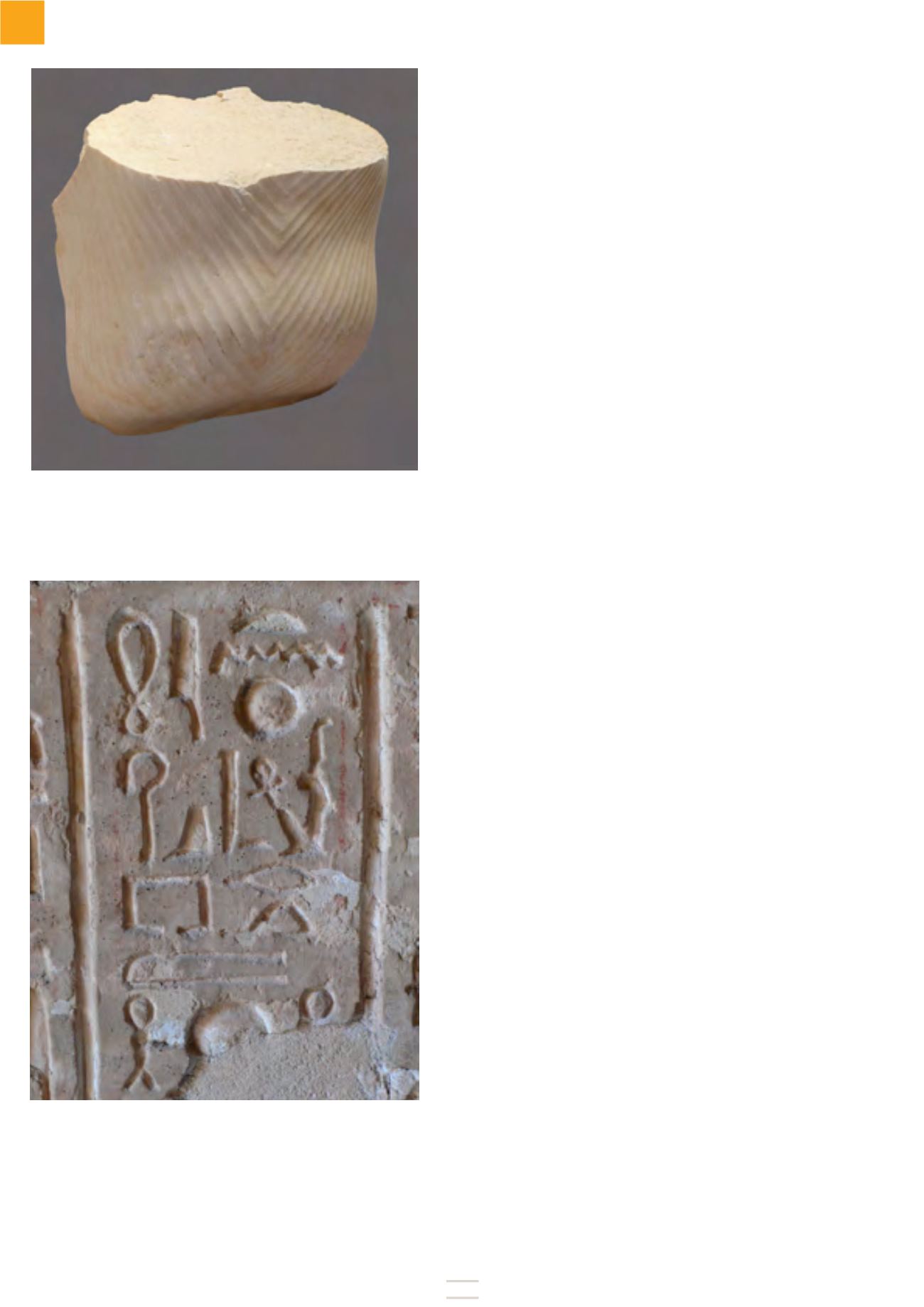

20
Nefertiti: beautiful and charismatic, always by the side of
her husband at official ceremonies both public and religi-
ous as well as being a skillful diplomat. What was her role
before, during and after the reign of Akhenaten?
Being beautiful does not necessarily mean that the person is
charismatic, a characteristic that is hard to define. In the case
of Nefertiti we have to rely upon sources which were chosen to
have a particular effect. We have no alternative sources. But
do note that at Amarna itself Meretaten seems, at least in
some circumstances, to have had greater prominence in the
latter part of Akhenaten’s reign and this was recognised by
foreign rulers in some of the letters they wrote to the Egyptian
court. One explanation is that she was put in charge of Akhe-
naten’s household at Amarna.
Amarna art includes countless representations of private
life at Court, scenes suffused with love and affection, both
within the couple and the family. Why, given the amount of
material available, has the subject never inspired a book
about the love story betwee Akhenaten and Nefertiti?
Has it not? I am not the person to ask. I am deeply interested
in the history of ideas and of processes, much less in the his-
tory of individuals where one has to rely largely upon inventi-
on to make up for the lack of sources. One can take the view
that, in the end, all human beings are likely to behave in simi-
lar ways and therefore it is justified, with a bit of empathy, to
write a family saga about any group from the past. But then,
why bother? You will realise from this that I do not read much
historical fiction.
Before arriving at Amarna, you worked with the University
of Pennsylvania at the royal palace and the city of Amenho-
tep III in Malqata. Let's talk about Teye, wife of Amenhotep
III and mother of Amenhotep IV/Akhenaten. She was pre-
sent in both reigns and during the co-regency.
How strong do you think her influence was during her son’s
reign?
If you believe that a person’s character can be read from their
face, then Teye is a good ancient Egyptian to work with. Her
statue heads invite the interpretation that she was the arche-
typal strong mother/mother-in-law. But if you think that such
an appoach is wishful thinking (as I do) then you are left with
nothing to work with.
What’s your view on Nicholas Reeves’s recent theory accor-
ding to which Tutankhamen’s tomb conceals other cham-
bers and possibly even Nefertiti’s tomb?
Reeves has drawn attention to what he sees as anomalies in
some of the wall surfaces in the tomb, as revealed by recent
3D scanning. There is nothing further to do other than to
hope that the actual walls will be subjected to non-destructive
Rear view of the torso of a woman dressed in a linen robe carved in indura-
ted limestone and found at the Great Aten Temple. The woman is most likely
to have been Nefertiti.
From the tomb of the God's Father, Ay (no. 25) at Amarna and the text reads:
'like Aten, the prince of Maat, who emerges from eternity.' The particular
interest is the way that Maat is shown with the conventional determinative of
the goddess Maat.


















